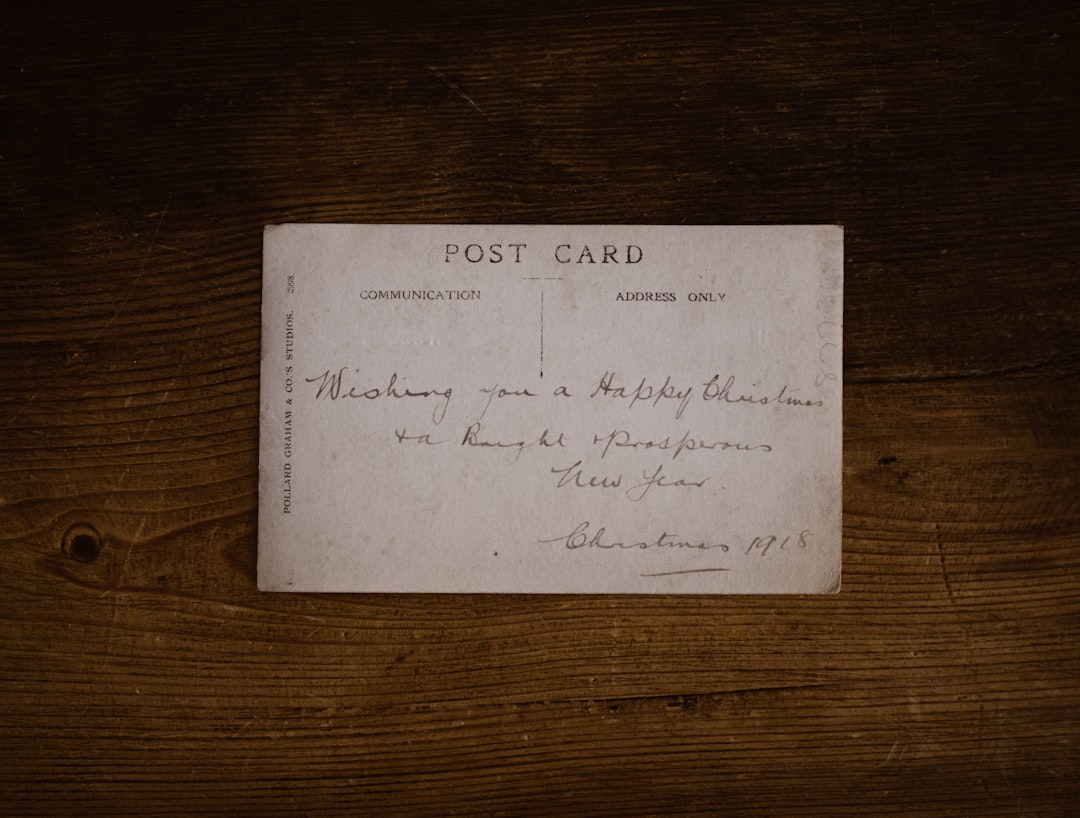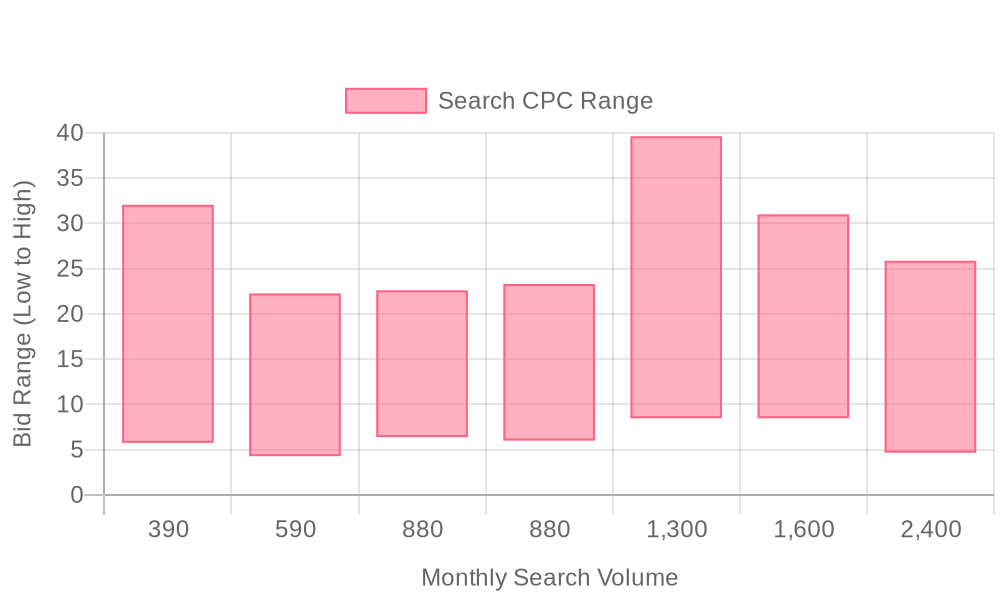
Supercharge your lead generation with a FREE Google Ads audit - no strings attached! See how you can generate more and higher quality leads
Get My Free Google Ads AuditFree consultation

No commitment
Supercharge your lead generation with a FREE LinkedIn Ads audit - no strings attached! See how you can generate more and higher quality leads
Get My Free Google Ads AuditFree consultation

No commitment
Supercharge your lead generation with a FREE Meta Ads audit - no strings attached! See how you can generate more and higher quality leads
Get My Free Google Ads AuditGet My Free LinkedIn Ads AuditGet My Free Meta Ads AuditFree consultation

No commitment
Supercharge your lead generation with a FREE Google Ads audit - no strings attached! See how you can generate more and higher quality leads
Get My Free Google Ads AuditFree consultation

No commitment
In today's complex marketing landscape, effective B2B marketing requires a strategic mix of both online and offline channels working in concert. Online channels like social media build digital brand awareness, email marketing nurtures ongoing relationships, and SEO drives organic visibility. Meanwhile, offline channels such as trade shows generate face-to-face connections, direct mail creates tangible touchpoints, and industry publications establish thought leadership. Within this integrated ecosystem, Google Ads plays a critical middle-funnel role by capturing high-intent prospects at the exact moment they're searching for solutions—effectively bridging the gap between broader awareness efforts and your sales process. For Google Ads for Postcard Marketing businesses, Google Ads represents a powerful opportunity to bridge online and offline marketing efforts: Intercept decision-makers at their precise moment of need, whether they're following up after a trade show or responding to a direct mail piece, Target with precision based on technical specifications and specialized terminology unique to your industry, Measure ROI completely by tracking from click to quote to closed deal, connecting digital touchpoints with offline sales, Complement other channels through remarketing to trade publication readers, event attendees, and digital audiences alike.

Integrating Google Ads with postcard marketing delivers a powerful blend of digital precision and tangible engagement. Marketers achieve higher-quality leads by unifying first-party data, intent signals, and direct mail touchpoints to drive action at every stage of the customer journey.
This step-by-step guide offers a complete framework for leveraging Google Ads in your multi-channel marketing campaigns. You will learn to build audience-centric paid search strategies, optimize for both online and offline conversions, and amplify direct mail performance with digital retargeting and real-time personalization.
Built for B2B marketers, service providers, and local operators, this resource empowers you to generate qualified leads, optimize spend, and strengthen your marketing ecosystem through unified, actionable data. The following sections break down each tactical component so you can execute high-impact Google Ads for postcard marketing with confidence.

Postcard marketing excels at tangible touchpoints, but integrating Google Ads multiplies impact by converting attention into measurable demand. Combining digital and direct mail ensures your brand stays top-of-mind at every stage, speaking to prospects where they research and make decisions. Digital to direct mail provides a deeper look at this trend.
While LinkedIn and email nurture awareness and relationships, Google Ads pinpoints audiences actively searching for postcard advertising and print solutions. This precision makes it possible to capture leads the moment they indicate intent, driving new high-margin projects from prospects who have not yet entered your nurture cycle.
Google Ads gives revenue teams the agility to launch time-sensitive postcard promotions and respond to market shifts instantly. With direct mail, you reach established territories, but Google Ads extends your reach into high-growth metros and underserved regions—often targeting these geographies based on real search demand.
Measurement is another advantage: Google Ads delivers closed-loop performance analytics, translating every click into attributed pipeline and contract value. For more insights on optimizing campaigns, check out our guide on Google Ads ROAS.
Integrating platforms like Sona enables marketers to move beyond aggregated reporting by identifying which visitors and companies respond to postcard campaigns across digital and offline channels. This end-to-end visibility allows for dynamic audience updates, real-time budget shifts toward high-converting accounts, and enriched CRM lead flows that sync seamlessly with Google Ads targeting for ongoing optimization.


Growth-driven B2B teams consistently outperform by identifying untapped markets that sit outside their current channels. Maximizing reach requires a proactive mix of deep keyword research, competitive intelligence, and precision targeting that captures both active buyers and latent demand.

Audience segmentation allows marketers to deliver highly relevant messaging and offers to each stage of the customer journey. By aligning direct mail and Google Ads audiences, revenue teams can maximize engagement and conversions across both physical and digital touchpoints. A precise segmentation strategy ensures that every postcard and ad serves a specific, measurable role in your broader acquisition and retention framework. Modern Postcard provides a deeper look at how digital and direct mail integration improves response rates.
Ready to optimize your audience segmentation? Get started and streamline your Google Ads and direct mail strategy.

| Industry | Keyword | Monthly Search Volume | Competition Level | Low Bid | High Bid |
| Postcard Marketing | just listed postcards | 390 | HIGH | 5.75 | 32.04 |
| Postcard Marketing | realtor postcards | 590 | HIGH | 4.28 | 22.24 |
| Postcard Marketing | postcard marketing | 880 | HIGH | 6.39 | 22.59 |
| Postcard Marketing | postcard advertising | 880 | HIGH | 6 | 23.29 |
| Postcard Marketing | postcard mailing services | 1300 | HIGH | 8.47 | 39.61 |
| Postcard Marketing | direct mail postcards | 1600 | HIGH | 8.47 | 30.98 |
| Postcard Marketing | real estate postcards | 2400 | HIGH | 4.67 | 25.86 |
Postcard marketing delivers exceptional response rates by reaching prospects in their homes, but capturing high-intent buyers at the exact moment of decision remains a challenge. Google Ads fills this gap by intercepting professionals searching for solutions, securing leads when interest peaks and conversion likelihood is highest.
A keyword strategy for Google Ads for postcard marketing should prioritize terms that reveal strong buyer intent and direct mail interest. Targeting keywords such as “postcard marketing services,” “direct mail advertising,” “postcard advertising,” and “cost-effective marketing campaigns” ensures visibility among decision-makers ready to engage. Modern Postcard provides a deeper look at how digital and direct mail can combine for stronger results. Supplementing with long-tail phrases like “Google Ads integration for direct mail” and “targeted advertising for postcards” narrows the audience to those evaluating omnichannel tactics. This alignment drives qualified traffic and measurably improves campaign efficiency.
Precision targeting is essential in B2B marketing where every click and impression must translate to tangible business outcomes. Leveraging real-time visitor identification and intent data, teams can prioritize spend on accounts actively researching direct mail marketing. Platforms like Sona Identification are designed to help uncover which businesses are visiting your site, enabling more precise ad targeting as intent signals shift.
Measurable ROI remains a top priority in any multi-channel initiative. Advanced attribution models enable granular tracking from the initial ad click to postcard receipt, online engagement, and final sale or inquiry. By unifying CRM and ad platform data, marketers capture both online and offline conversions, attributing revenue accurately and optimizing spend in real time. For more insights on revenue attribution, check out our guide on Attribution Best Practices. This holistic approach to attribution provides clear insight into which keyword themes and tactics drive customer acquisition, supporting continuous improvement across all marketing campaigns.
Channel synergy further amplifies results by retargeting web visitors across the Google Display Network, YouTube, and social platforms with creative that echoes the original postcard offer. With seamless CRM and ad sync, enriched audience segments can be activated instantly, ensuring that every high-value lead receives coordinated, personalized messaging across every stage of the buying journey. Google Ads Channel Benchmarks shares industry benchmarks for using Google Ads channels to nurture and convert leads. This integrated strategy maximizes reach, relevance, and conversion rates for modern B2B teams focused on scalable growth.
A high-performing Google Ads for postcard marketing strategy requires a disciplined approach to campaign setup, creative development, and ongoing optimization. Successful teams integrate granular targeting, persuasive messaging, and cross-channel data enrichment to make every touchpoint drive measurable value. The following framework details the essential steps—each designed to help B2B revenue teams build, launch, and iterate campaigns that maximize ROI and customer acquisition.
Effective keyword architecture is the foundation of targeted advertising in postcard marketing campaigns. Begin by clustering keywords according to service type, such as installation, promotions, and industry-specific solutions. Incorporate geographic modifiers including city, neighborhood, and "near me" phrases to localize reach and capture intent from nearby prospects. Expand your lists with long-tail and question-based queries, which often signal higher purchase intent and lower competition. To further refine audience quality, apply negative keyword filters that exclude irrelevant searches and minimize wasted spend.
Aligning keyword strategy with your content marketing ensures cohesive messaging and stronger search-to-site continuity. Modern platforms let marketers enrich these lists with real visitor data, adding terms that reflect real conversations and high-intent signals. Intent-driven retargeting builds on these strategies, helping campaigns capture demand as it emerges, not after it peaks.
Crafting ad copy for postcard advertising campaigns means speaking directly to target pain points and motivating immediate action. Headlines should address key industry challenges, using language your ideal customers recognize from their everyday business struggles. Incorporate trust markers—such as certifications, client reviews, or recent case wins—to build credibility and reduce friction in the decision process. Creating urgency through limited-time offers or exclusive deals helps accelerate conversions, especially when paired with clear value propositions. Take advantage of Google Ads extensions like call buttons, structured snippets, and service highlights to boost engagement and provide multiple response channels.
Maintaining consistent messaging across digital, social, and email channels reinforces brand memory and trust. When ad copy reflects themes and offers seen in your direct mail and email sequences, prospects receive a seamless experience that nudges them closer to conversion. Unified messaging guide provides a deeper look at how unified messaging across channels can drive response rates.
A focused landing page experience is crucial for converting postcard marketing and online advertising traffic. Structure each page for tight alignment with its corresponding keyword and ad group, so every visitor feels their search intent is immediately addressed. Segment landing pages by service vertical or campaign objective; for example, one page for promotional offers and another for informational requests. Integrate ROI calculators, trust badges, and detailed FAQs to answer objections and demonstrate tangible value.
Persistent, clear calls-to-action (CTAs) should be strategically placed and fully optimized for mobile, as many users will engage from their phones. Connecting landing page forms directly to your CRM and marketing automation system enables instant lead routing and follow-up. Solutions such as Sona Destinations support seamless integration, ensuring leads move smoothly into the right nurture or sales workflows as soon as they convert.
Continuous optimization is essential for cost-effective marketing and measurable growth in postcard advertising performance. Track both micro-conversions (such as downloads or form starts) and macro-conversions (like demo requests or purchases) to build a complete picture of campaign health. Employ smart bidding strategies such as Target CPA or Max Conversions to let machine learning allocate budget toward the highest-value actions. Google Ads strategies shares industry benchmarks for leveraging ad network features. Regularly A/B test ad headlines, CTA placements, and landing page layouts to identify what resonates best with your audience.
Importing offline conversions—such as deals closed after a direct mail response—unlocks accurate attribution and enables smarter bidding based on real revenue outcomes. With unified data flows, marketers can use insights from Google Ads to guide content creation, refine targeting, and uncover new market opportunities. For more on optimizing attribution and revenue tracking, explore our guide on attribution best practices. Real-time intent data and seamless CRM sync ensure that as leads move through the funnel, ad audiences refresh automatically, keeping campaigns focused on high-converting segments and eliminating wasted impressions.
Combining Google Ads with postcard marketing enables marketers to orchestrate a unified, high-impact outreach strategy. By integrating precise digital targeting with the memorable, tactile experience of direct mail, B2B teams can strengthen brand recall and accelerate customer acquisition at every stage of the funnel. One overview in Modern Postcard provides a deeper look at this trend.
Integrating Google Ads with postcard marketing isn’t just a strategy—it’s a game-changer for bridging the gap between digital and physical customer engagement. By combining the precision of online targeting with the tangible impact of direct mail, you unlock a powerful way to stand out in a crowded market.
We’ve explored how to align audience targeting, craft cohesive messaging, and track performance across both channels. Whether you’re looking to boost response rates, reinforce brand recall, or maximize ROI, this hybrid approach ensures your campaigns work harder and smarter for you.
Imagine reaching your ideal customers both online and offline, creating a seamless journey that drives action. The tools and tactics are here—now it’s time to put them into practice and see the results for yourself.
Ready to take the next step? Start a free trial to experience how our platform simplifies this integration and amplifies your marketing impact.
Integrating Google Ads with postcard marketing involves using digital precision to enhance tangible engagement. This can be done by syncing audience data from offline and online channels, using retargeting strategies, and aligning messaging across postcards, ads, and landing pages for a seamless experience.
Google Ads enhances postcard campaigns by capturing high-intent prospects, providing precise targeting, and delivering measurable ROI through tracking conversions from both digital and offline touchpoints, thus maximizing the impact of marketing efforts.
The budget for Google Ads in postcard marketing should be strategically allocated based on keyword targeting, audience segmentation, and real-time intent signals to ensure spending is focused on high-converting opportunities and to minimize wasted impressions.
While the article does not directly reference specific case studies, it highlights successful strategies such as keyword targeting, audience segmentation, and cross-channel integration that have been effective in postcard marketing campaigns with Google Ads.
Key metrics to track include online and offline conversions, ROI, audience engagement levels, and the effectiveness of retargeting strategies. Advanced attribution models can help in measuring the complete campaign performance from initial ad click to final conversion.
Join results-focused teams combining Sona Platform automation with advanced Google Ads strategies to scale lead generation

Connect your existing CRM

Free Account Enrichment

No setup fees
No commitment required

Free consultation

Get a custom Google Ads roadmap for your business
Join results-focused teams combining Sona Platform automation with advanced Meta Ads strategies to scale lead generation

Connect your existing CRM

Free Account Enrichment

No setup fees
No commitment required

Free consultation

Get a custom Google Ads roadmap for your business
Join results-focused teams combining Sona Platform automation with advanced LinkedIn Ads strategies to scale lead generation

Connect your existing CRM

Free Account Enrichment

No setup fees
No commitment required

Free consultation

Get a custom Google Ads roadmap for your business
Join results-focused teams using Sona Platform automation to activate unified sales and marketing data, maximize ROI on marketing investments, and drive measurable growth

Connect your existing CRM

Free Account Enrichment

No setup fees
No commitment required

Free consultation

Get a custom Google Ads roadmap for your business
Over 500+ auto detailing businesses trust our platform to grow their revenue
Join results-focused teams using Sona Platform automation to activate unified sales and marketing data, maximize ROI on marketing investments, and drive measurable growth

Connect your existing CRM

Free Account Enrichment

No setup fees
No commitment required

Free consultation

Get a custom Google Ads roadmap for your business
Over 500+ auto detailing businesses trust our platform to grow their revenue
Join results-focused teams using Sona Platform automation to activate unified sales and marketing data, maximize ROI on marketing investments, and drive measurable growth

Connect your existing CRM

Free Account Enrichment

No setup fees
No commitment required

Free consultation

Get a custom Google Ads roadmap for your business
Over 500+ auto detailing businesses trust our platform to grow their revenue
Our team of experts can implement your Google Ads campaigns, then show you how Sona helps you manage exceptional campaign performance and sales.
Schedule your FREE 15-minute strategy sessionOur team of experts can implement your Meta Ads campaigns, then show you how Sona helps you manage exceptional campaign performance and sales.
Schedule your FREE 15-minute strategy sessionOur team of experts can implement your LinkedIn Ads campaigns, then show you how Sona helps you manage exceptional campaign performance and sales.
Schedule your FREE 15-minute strategy sessionOur team of experts can help improve your demand generation strategy, and can show you how advanced attribution and data activation can help you realize more opportunities and improve sales performance.
Schedule your FREE 30-minute strategy sessionOur team of experts can help improve your demand generation strategy, and can show you how advanced attribution and data activation can help you realize more opportunities and improve sales performance.
Schedule your FREE 30-minute strategy sessionOur team of experts can help improve your demand generation strategy, and can show you how advanced attribution and data activation can help you realize more opportunities and improve sales performance.
Schedule your FREE 30-minute strategy sessionOur team of experts can help improve your demand generation strategy, and can show you how advanced attribution and data activation can help you realize more opportunities and improve sales performance.
Schedule your FREE 30-minute strategy session





Launch campaigns that generate qualified leads in 30 days or less.
